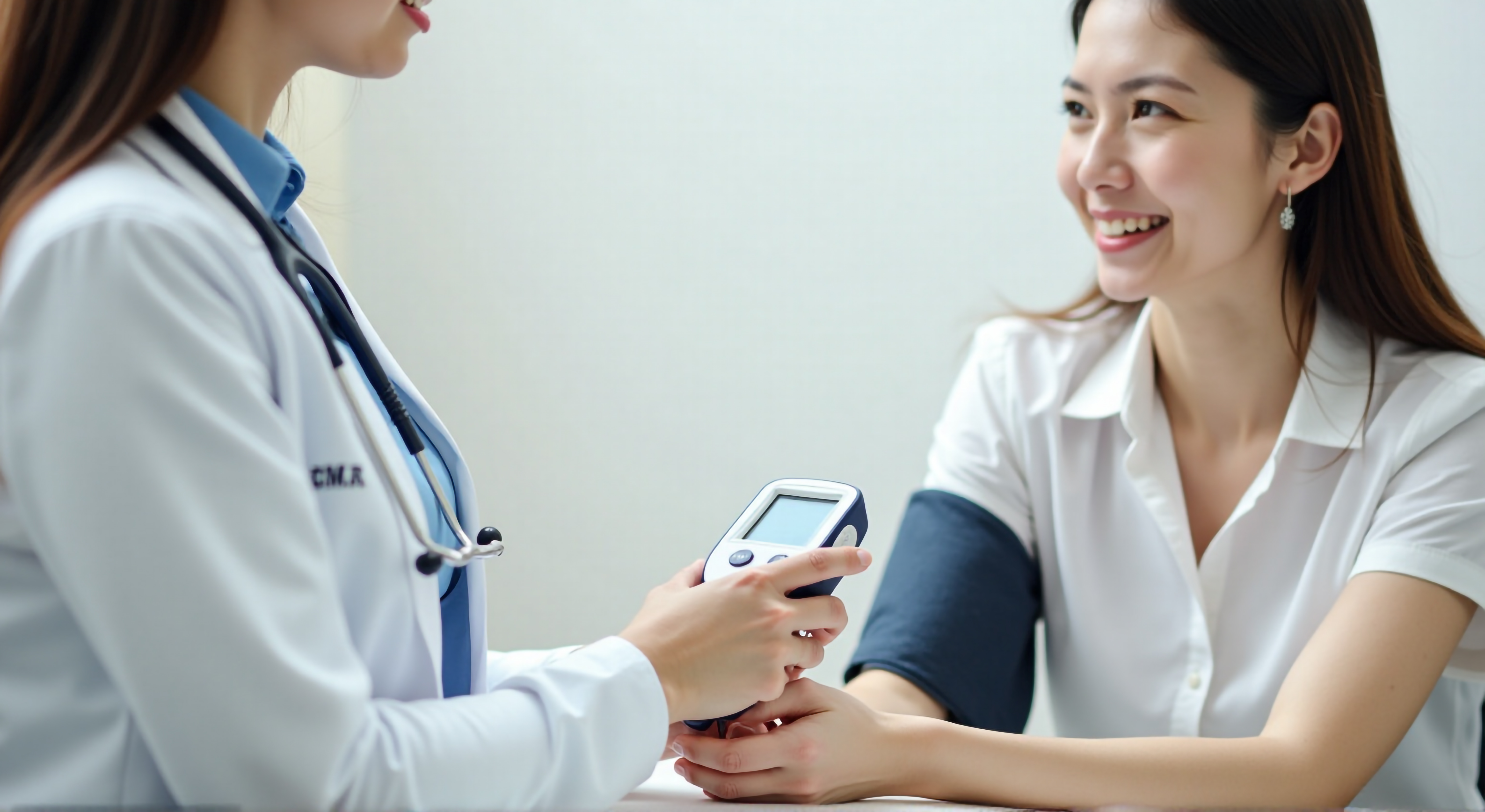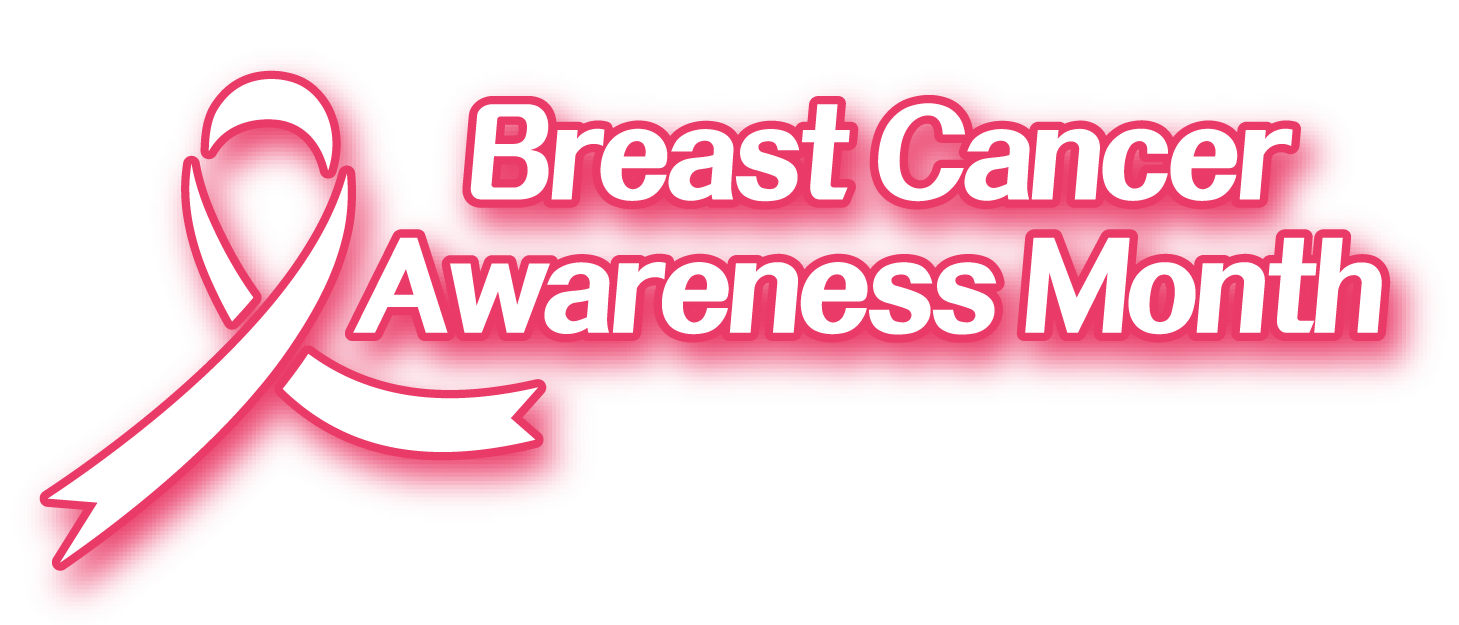Breast cancer is the most common type of cancer among women worldwide. According to statistics from 2022, 2.3 million women globally were diagnosed with breast cancer, and approximately 670,000 died from the disease. Among 185 countries, 157 list breast cancer as the most common cancer in women. Statistics show regional differences in breast cancer incidence rates. In countries with a high Human Development Index, 1 in every 12 women will be diagnosed with breast cancer during her lifetime, and 1 in every 71 women will die from it. The situation in Hong Kong also warrants attention, as breast cancer is one of the most common cancers among local women, with a rising mortality rate, ranking among the top ten causes of cancer-related deaths.
This guide introduces the characteristics, early symptoms, risk factors, and screening methods of breast cancer, helping the public detect early warning signs and understand the treatment options at each stage. While most breast lumps are benign, individuals should seek professional diagnosis and medical consultation as soon as a lump is detected.
Table of Contents (Click to Navigate)
- Causes and High-Risk Groups
- Key Points for Identifying Early Symptoms of Breast Cancer
- Breast Cancer Screening Methods
- Primary Treatment Approaches
- FAQs
Don’t wait until symptoms appear—early screening is key to defeating breast cancer. Schedule your health check today and assess your risk early.
What Is Breast Cancer? Development and Spread
Breast cancer is a malignant tumor formed by the uncontrolled division and growth of breast cells. The female breast is primarily composed of glandular tissue, milk ducts, fat, and connective tissue, functioning as a gland that produces and secretes milk. Breast cancer mainly occurs in two categories:
- Ductal carcinoma: occurs within the milk ducts and is the more common type.
- Lobular carcinoma: originates in the milk-producing lobules./li>
The breast contains abundant blood vessels, lymphatic vessels, and lymph nodes, through which breast cancer cells can spread to other parts of the body, including distant organs such as the bones, lungs, liver, and brain. Most breast lumps are benign and do not spread beyond the breast. However, certain benign tumors may increase the risk of developing breast cancer later. Any abnormalities in the breast should be promptly evaluated by a medical professional.
Global Breast Cancer Incidence
Breast cancer is the second most common cancer type worldwide and the most prevalent cancer among women. According to global statistics from 2022:
- New cases: 2.3 million
- Deaths: 670,000
- Estimated for 2050: new cases expected to reach 3.2 million, deaths 1.1 million
Regions with the highest incidence rates include Australia, New Zealand, North America, and Northern Europe. Regions with the highest mortality rates are Melanesia, Polynesia, and West Africa, mainly due to limited medical resources and lack of timely and effective treatment.
Breast Cancer Statistics in Hong Kong
In 2022, there were 5,182 new female breast cancer cases in Hong Kong, accounting for 28.6% of all new cancer cases in women. The median age at diagnosis was 58 years, with approximately 130 new cases per 100,000 women. Breast cancer ranks as the third leading cause of cancer death among women in Hong Kong, following lung and colorectal cancers, causing 834 female deaths in 2023.
Causes of Breast Cancer and High-Risk Groups
Multiple factors may increase the risk of developing breast cancer. Understanding these risk factors helps in taking early preventive measures. The causes of breast cancer are complex, and the medical community has not yet identified a single definitive cause.
Genetics and Family History
Genetic inheritance is a known risk factor for breast cancer. Studies show:
- About 5-10% of breast cancer cases are related to heredity.
- Having a first-degree relative (mother, sister, or daughter) with breast cancer doubles the risk.
- The risk is higher if relatives developed cancer at a younger age or have bilateral breast cancer.
BRCA1 and BRCA2 gene mutations are the most common hereditary breast cancer genes. Women carrying the BRCA1 mutation have a 46-85% risk of developing breast cancer by age 70, while BRCA2 carriers have a 43-84% risk. Approximately 84% of breast cancer patients in Hong Kong have no family history.
Hormones and Reproductive History
The level of female hormones in the body is closely related to breast cancer risk:
- Women with early menarche (before age 12) and late menopause (after age 55) have higher risk.
- Women who have never given birth or had their first child after age 30 have increased risk.
- Women who have never breastfed have a higher likelihood of developing breast cancer.
Compared to women who had their first child after age 30, those who gave birth before age 20 have a 50% lower risk. Long-term use of hormone replacement therapy and contraceptive pills may also increase risk.
Lifestyle and Environmental Factors
Unhealthy lifestyle habits are important risk factors. Obesity shows a clear association with breast cancer:
- Risk increases by 17% when BMI exceeds 25.
- Risk increases by 37% when BMI exceeds 30.
- Risk increases by nearly 60% when BMI exceeds 35.
Women who exercise regularly have a 20-40% lower chance of developing breast cancer than those who do not. Each additional hour of weekly exercise reduces risk by about 6%. Alcohol consumption, smoking, and a high-fat diet also increase risk.
Exposure to environmental hormones, plasticizers, and other chemicals are considered potential risk factors.
Lump Location and Risk Association
The most common symptom of breast cancer is a lump in the breast, usually a single, hard, solid mass in one breast that is relatively immobile, may be painless, and often has an irregular contour. Age affects the likelihood that a breast lump is malignant; women under 30 years old have a lower chance of a malignant lump.
Identifying the Early Symptoms of Breast Cancer

Most breast cancers do not show obvious symptoms in the early stages, and patients often only notice abnormalities after the disease has progressed. Recognizing these early warning signs is crucial for effective treatment.
Breast Cancer Warning Signs
Breast cancer is the most common cancer among women worldwide. Early examination upon noticing any abnormal symptoms is vital. This guide lists eight major warning signs of breast cancer to help you identify potential issues and seek professional medical evaluation promptly.
| Symptom | Description |
|---|---|
| 1. Painless Breast Lump | A breast lump is the most common symptom. Painless lumps deserve special attention. Although about 90% are benign, persistent lumps after menstruation should be medically evaluated. |
| 2. Change in Breast Shape or Size | Changes in breast symmetry or size may occur. Tumors can affect Cooper’s ligaments, causing deformation or dimpling. |
| 3. Nipple Retraction or Abnormal Discharge | Acquired nipple inversion or bloody/dark discharge, especially if persistent on one side, requires high vigilance. |
| 4. Peau d’Orange (Orange Peel) Skin Changes | Cancer cells blocking lymphatic vessels cause peau d’orange changes. Hardened, tight, or discolored skin is abnormal. |
| 5. Enlarged Axillary Lymph Nodes | Hard lymph nodes persisting for weeks may be related to breast cancer metastasis. |
| 6. Areola or Nipple Skin Discoloration | Red rash, peeling, or eczema-like changes may indicate Paget’s disease; persistent unilateral symptoms require medical attention. |
| 7. Persistent Swelling in One Breast | Sudden swelling with pain may indicate inflammatory breast cancer, rare (2%) but highly aggressive. |
| 8. Localized Breast Warmth or Redness | Widespread redness and warmth unresponsive to antibiotics may indicate inflammatory breast cancer, requiring core needle biopsy for diagnosis. |
The presence of these symptoms does not necessarily mean you have breast cancer. However, if they persist, it is recommended to seek professional medical evaluation promptly to ensure early detection and treatment.
Breast Cancer Screening Methods
Regular breast cancer screening is crucial for detecting breast cancer at an early stage. Different screening methods have their own characteristics, and combining self-examination with professional medical tests can improve diagnostic accuracy.
Breast Self-Examination
Doctors recommend that women aged 20 and above perform breast self-examinations monthly. Premenopausal women should do so between the 7th and 10th day after the start of their menstruation, while postmenopausal women can choose a fixed date each month. The steps include:
- Standing in front of a mirror to observe breast shape and size changes, checking for skin wrinkles or unevenness
- Using fingers to massage the breast in small circular motions, examining from the outer area inward to the nipple, including the armpit region
- Comparing both breasts to notice any abnormalities
Mammography
Mammography is the only screening method proven to reduce breast cancer mortality. This technique uses low-dose X-rays to image the breast and can detect abnormalities that are not visible to the naked eye or palpable by hand, especially microcalcifications.
Professor Chu Chiu-wing of the Chinese University of Hong Kong recommends women start mammography every two years from age 40. The government subsidizes free mammography every two years for women aged 45 to 69. Those with a family history of breast cancer within second-degree relatives can begin screening at 40.
Breast Ultrasound
Breast ultrasound uses sound wave reflection to examine lumps inside the breast and is especially suitable for women with dense breast tissue. Since East Asian women tend to have denser breast tissue, ultrasound is usually chosen under age 40, while mammography combined with ultrasound is recommended for women over 40.
Magnetic Resonance Imaging (MRI)
MRI is a radiation-free, highly sensitive screening method valuable for high-risk groups, capable of detecting small tumors not visible on mammograms. However, due to higher costs, it is generally not used for routine screening.
Biopsy
If imaging detects suspicious lesions, a biopsy is needed for diagnosis. Fine needle aspiration uses a syringe to extract tumor cells without anesthesia. Core needle biopsy requires local anesthesia but provides more accurate diagnosis and helps distinguish between carcinoma in situ and invasive cancer.
Timing and Frequency of Screening
Breast self-examinations should be performed within seven days after menstruation ends, when breasts are less affected by hormonal changes. Recommended screening frequency depends on risk level:
- High-risk individuals, such as BRCA1/2 mutation carriers: annual mammography
- Moderate-risk individuals (e.g., with family history): every two years
- Average-risk women aged 44 to 69: every two years
Breast Cancer Staging and Treatment Options
After diagnosis, doctors will assess the cancer stage, which is critical for choosing treatment and evaluating prognosis. Understanding breast cancer stages and corresponding treatment options is important for patients and their families.
| Stages | Description |
|---|---|
| Stage 0 | Carcinoma in situ. Cancer cells are confined within the breast ducts and have not invaded surrounding tissues. |
| Stage I | Tumor is less than 2 cm in diameter with no lymph node involvement. – Stage IA: Tumor is smaller than 2 cm. – Stage IB: Tumor is less than 2 mm, with small clusters of cancer cells in nearby lymph nodes. |
| Stage II | Tumor is between 2 and 5 cm, or cancer has spread to 1–3 axillary lymph nodes. |
| Stage III | Tumor is larger than 5 cm, or cancer has spread to 4–9 lymph nodes, or has invaded the chest wall or skin. |
| Stage IV | Cancer has metastasized to distant organs such as the lungs, liver, bones, or brain. |
Primary Treatment Options

Surgical Treatment
Surgery is the cornerstone of breast cancer treatment. For early-stage breast cancer, breast-conserving surgery (lumpectomy) is often an option. For larger tumors or more advanced cases, a total mastectomy may be necessary. Lymph node dissection assists in accurate staging and treatment planning.
Chemotherapy
Chemotherapy may be administered before surgery (neoadjuvant chemotherapy) to shrink the tumor, or after surgery (adjuvant chemotherapy) to reduce the risk of recurrence. It is commonly recommended for Stage II or higher cases, especially if lymph node involvement is present.
Radiation Therapy
Radiation therapy is typically used following breast-conserving surgery. Studies have shown outcomes comparable to modified radical mastectomy. Post-operative radiotherapy is advised if the tumor exceeds 5 cm or if multiple lymph nodes are involved.
Hormonal and Targeted Therapies
Hormonal Therapy
Indicated for hormone receptor-positive breast cancer. Approximately one-third of patients benefit from this treatment. Those with both estrogen and progesterone receptors show a response rate of up to 80%. Postmenopausal women may be treated with aromatase inhibitors, while premenopausal women are often prescribed tamoxifen.
Targeted Therapy
Designed for specific breast cancer subtypes. For HER2-positive breast cancer, trastuzumab (Herceptin) is commonly used. In advanced hormone receptor-positive, HER2-negative breast cancer, combining hormonal therapy with a CDK4/6 inhibitor has shown to extend overall survival to 63.9 months.
The Importance of Early Detection
Routine breast self-examinations are a basic yet essential part of breast health management. If a painless lump, changes in breast shape, nipple abnormalities, or peau d’orange (orange peel-like) skin changes are observed, prompt medical evaluation is recommended.
Women aged 40 and above should undergo regular mammography as advised by their physician. Those with a family history of breast cancer should be especially vigilant.
Understanding personal risk factors is equally important. Genetic predisposition, hormone levels, reproductive history, and lifestyle habits all contribute to breast cancer risk. While some factors cannot be changed, adopting healthy lifestyle habits—such as maintaining a healthy weight, exercising regularly, and limiting alcohol consumption—can help reduce the risk of developing breast cancer.
Prevention and effective management of breast cancer require increased health awareness, regular screening, a healthy lifestyle, and timely medical consultation. Early detection and treatment remain the most critical elements in the successful management of breast cancer.
FAQs
Q1. What are the early symptoms of breast cancer?
- Early symptoms of breast cancer may include a painless breast lump, changes in the shape or size of the breast, nipple inversion or abnormal discharge, peau d’orange (orange peel-like) skin changes, and swelling of lymph nodes in the armpit. If any of these symptoms are noticed, it is important to seek medical evaluation promptly.
Q2. What factors increase the risk of developing breast cancer?
- Risk factors for breast cancer include genetic mutations (such as BRCA1/2), family history of breast cancer, hormonal changes, reproductive history (e.g., not having children or having a first child at a later age), and unhealthy lifestyle habits (such as obesity, physical inactivity, and alcohol consumption). Understanding your individual risk can help you take proactive preventive measures.
Q3. How should breast self-examination be performed?
- Breast self-examination involves three steps:
Stand in front of a mirror to observe the shape and skin condition of the breasts.
Use your fingers to make small circular motions, examining from the outer breast toward the nipple, including the armpit area.
Compare both breasts for any asymmetry or changes.
It is recommended that women over the age of 20 perform self-examinations monthly.
Q4. What are the treatment options for breast cancer?
- Primary treatment options for breast cancer include surgery (such as breast-conserving surgery or mastectomy), chemotherapy, radiotherapy, hormone therapy, and targeted therapy. The specific treatment plan depends on the cancer stage, type, and the individual patient’s condition. Early-stage breast cancer has a higher treatment success rate.
Q5. How can the risk of breast cancer be reduced?
- Ways to reduce breast cancer risk include maintaining a healthy weight, engaging in regular physical activity, limiting alcohol consumption, avoiding smoking, eating a balanced diet, and breastfeeding when possible. In addition, regular breast self-examinations and professional screening (such as mammography) are crucial preventive measures. Individuals at high risk should consult a physician about the possibility of preventive medication.
References
- World Health Organization – Breast Cancer
- Hong Kong Cancer Fund – Breast Cancer
- United Nations News – 世卫组织警告:全球乳腺癌病例到2050年或将激增近40%
- Cancer Information Website (Hong Kong) – Breast Cancer
- Department of Health (Hong Kong) – Breast Cancer
- Hong Kong Anti-Cancer Society – Women related cancers





